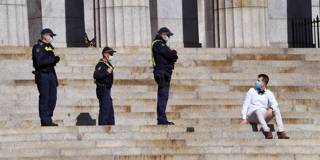When deciding whether to impose strict public-health measures to rein in COVID-19, it is not enough to determine how many lives will be saved and lost. An adequate assessment of the costs and benefits must address three issues.
MELBOURNE – For the past three months, this metropolitan area of nearly five million people, the capital of the Australian state of Victoria, has been under one of the world’s tightest lockdowns. You may leave home only if shopping for essential items, meeting medical needs, providing care, taking up to two hours of daily exercise, and going to work if it is impossible to work from home. Travel of more than five kilometers (3.1 miles) from home, or across the boundary of the metropolitan area, is prohibited. Police hand out heavy fines to violators.
The Victorian government ordered the lockdown on July 5, after a day in which the state, which has a population of 6.7 million, recorded 191 new COVID-19 cases – the state’s highest daily total since the pandemic began. The outbreak peaked at 723 new cases on July 30 and then began to fall. By October 4, the 14-day moving average had dropped to 12.
At the time of writing, the state has had over 20,000 cases and 800 deaths. All the other Australian states together have had fewer than 7,000 cases and under one hundred deaths, making it possible to hope that Australia could eliminate the virus, as neighboring New Zealand has come close to doing.

MELBOURNE – For the past three months, this metropolitan area of nearly five million people, the capital of the Australian state of Victoria, has been under one of the world’s tightest lockdowns. You may leave home only if shopping for essential items, meeting medical needs, providing care, taking up to two hours of daily exercise, and going to work if it is impossible to work from home. Travel of more than five kilometers (3.1 miles) from home, or across the boundary of the metropolitan area, is prohibited. Police hand out heavy fines to violators.
The Victorian government ordered the lockdown on July 5, after a day in which the state, which has a population of 6.7 million, recorded 191 new COVID-19 cases – the state’s highest daily total since the pandemic began. The outbreak peaked at 723 new cases on July 30 and then began to fall. By October 4, the 14-day moving average had dropped to 12.
At the time of writing, the state has had over 20,000 cases and 800 deaths. All the other Australian states together have had fewer than 7,000 cases and under one hundred deaths, making it possible to hope that Australia could eliminate the virus, as neighboring New Zealand has come close to doing.